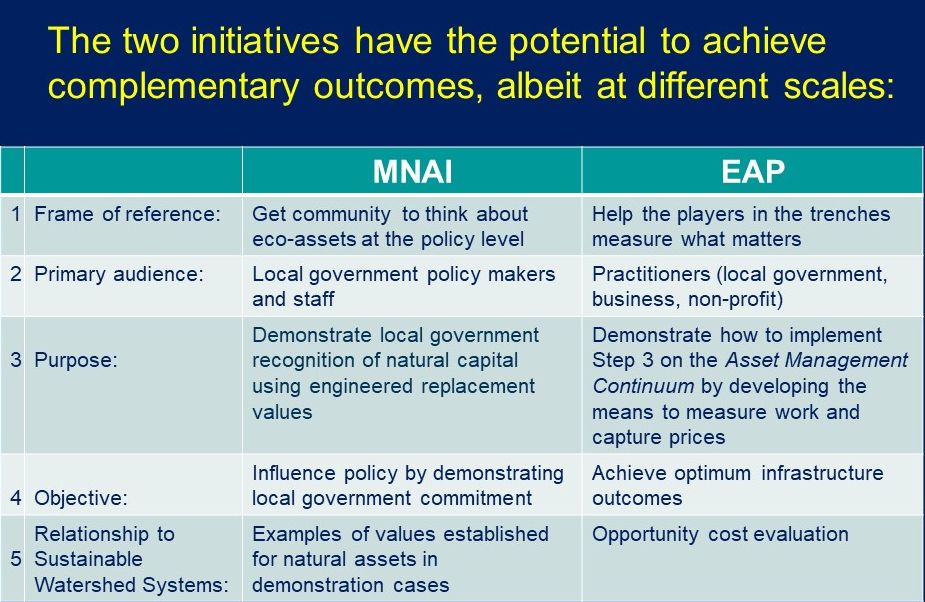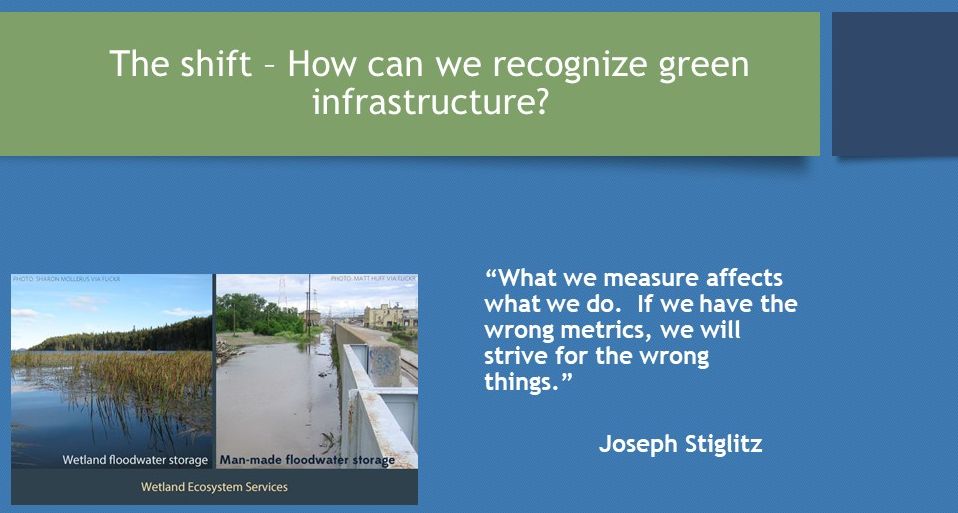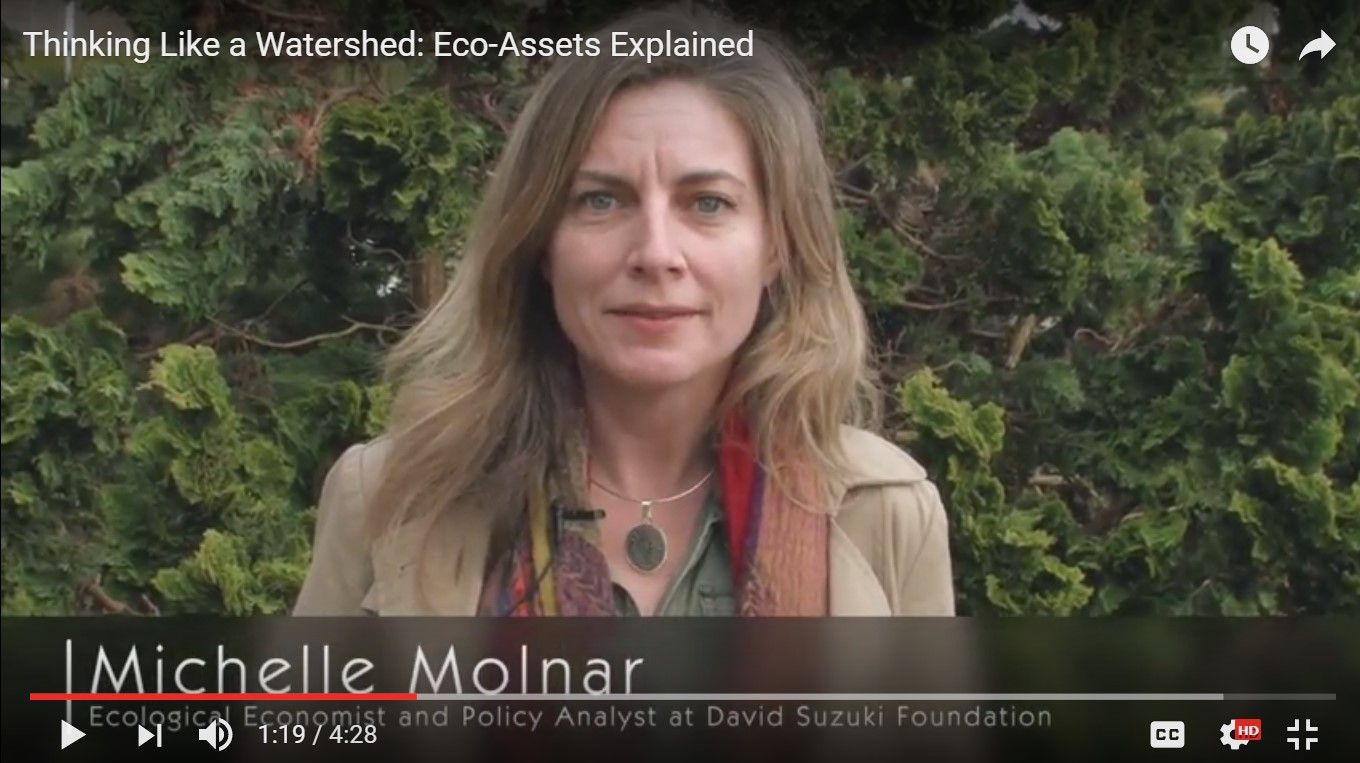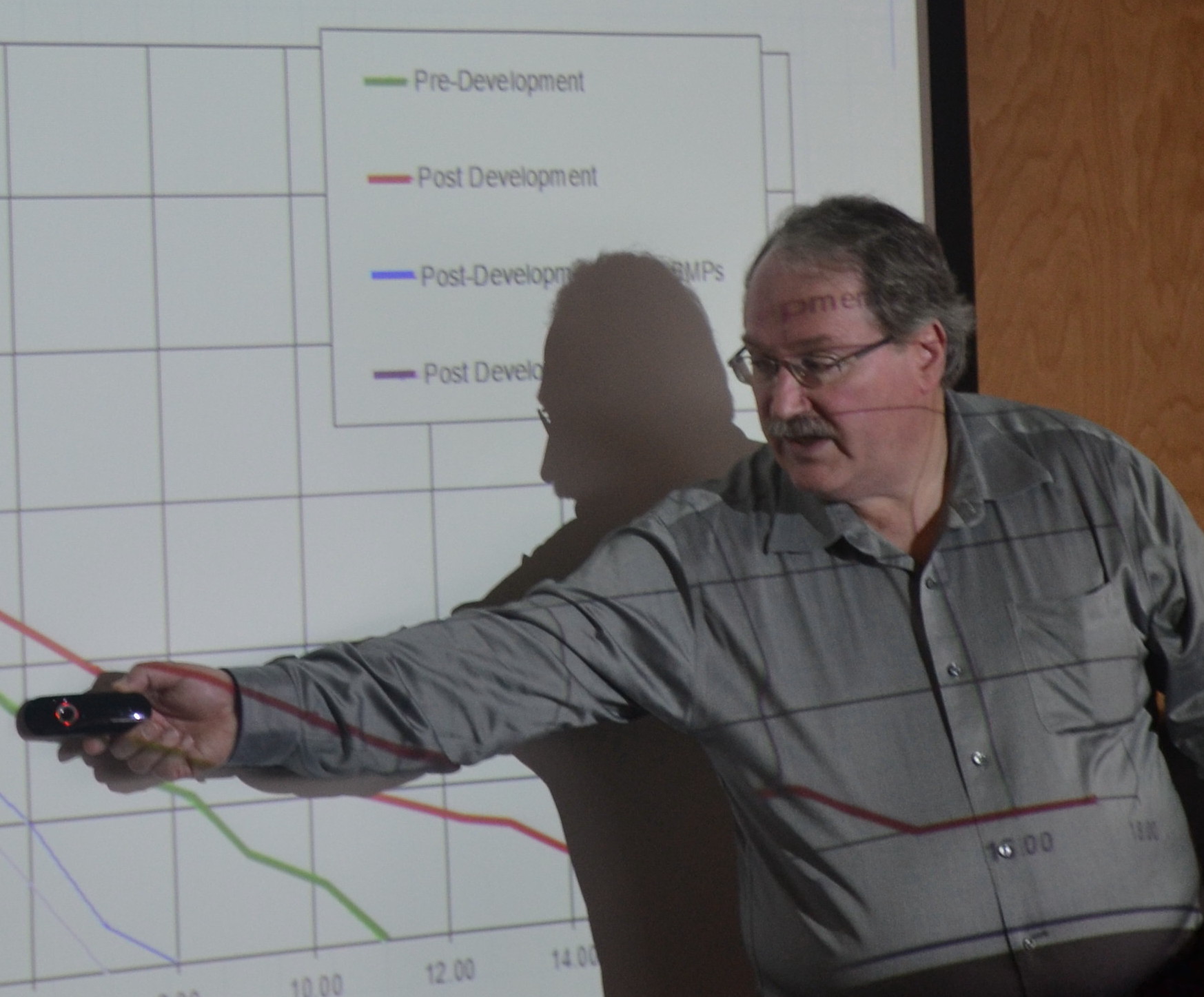2017 Comox Valley Symposium: Moving Towards "Sustainable Watershed Systems, through Asset Management" – What would eco-asset management look like in practice, on the ground, through a local government lens?
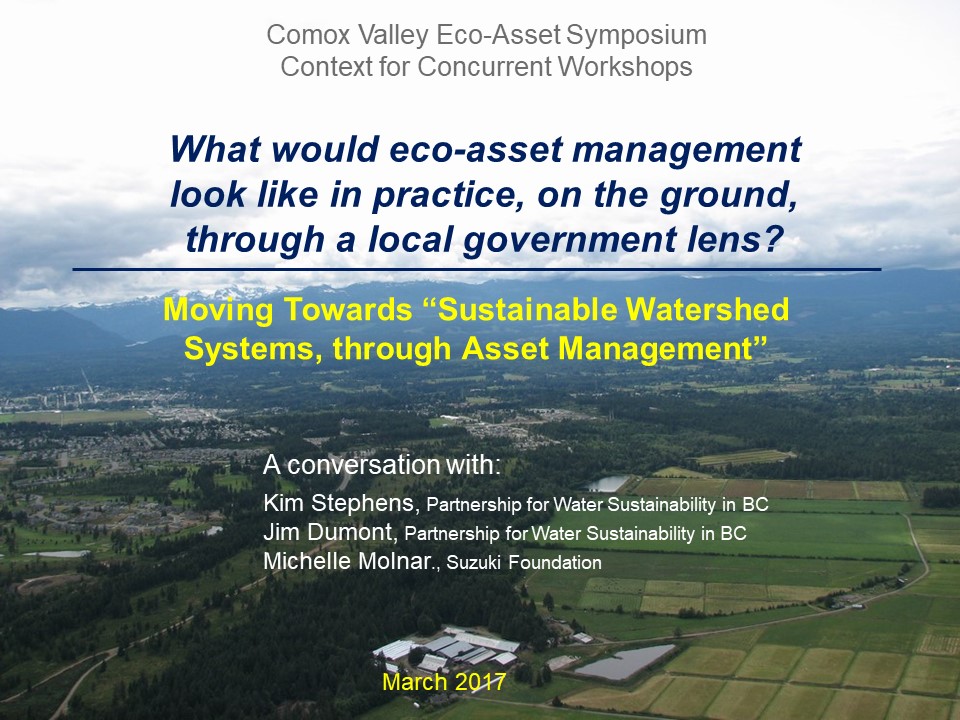
Click on the image above to access the YouTube video of the co-presentation. Or visit https://youtu.be/L5jCJgXW4T0
Valuing Ecological Assets
The 2017 Comox Valley Symposium introduced participants to a whole-system, water balance approach for restoration of watershed health. Sustainable Watershed Systems, through Asset Management is based on this premise: natural watershed systems are infrastructure assets – we must manage and protect them as such.
 “The Symposium was structured around a series of workshop segments that assessed natural systems opportunities in the upper, mid and lower watersheds. Educational outcomes were modest. The measure of success was that participants would understand the concept to ‘think like a watershed’, believe that it can be done, and commit to playing a role so that it will happen,” stated Tim Ennis, Executive Director, Comox Valley Land Trust.
“The Symposium was structured around a series of workshop segments that assessed natural systems opportunities in the upper, mid and lower watersheds. Educational outcomes were modest. The measure of success was that participants would understand the concept to ‘think like a watershed’, believe that it can be done, and commit to playing a role so that it will happen,” stated Tim Ennis, Executive Director, Comox Valley Land Trust.
A tag-team presentation by Kim Stephens, Michelle Molnar and Jim Dumont provided context for three concurrent workshops on the upper, mid and lower watersheds. The co-presentation was structured as a conversation, and in two parts. In the first part, the speakers presented core concepts. In the second part, Kim Stephens facilitated a town-hall sharing and learning session.
To Learn More:
Download Valuing Ecological Assets to view the complete storyline for the tag-team presentation by Kim Stephens, Michelle Molnar and Jim Dumont.
Download the Agenda and Presenters List for the 2017 Eco-Asset Symposium.
Two “Eco-Asset” Initiatives
“It is important to recognize that we are all on a ‘green infrastructure’ journey,” stated Kim Stephens, Executive Director, Partnership for Water Sustainability in BC. This journey did not start yesterday. This journey has a 20 year history.
“When one thinks about Ian McHarg’s quotes from 1967 (when he wrote ‘Design with Nature’), what was really significant was what he wrote in the Preface in the 1992 edition. McHarg reflected on the changes that had taken place in North America during that 25 year period, and they were transformational when compared to conditions in the 1960s.
“Yes, if you look back, we are doing a lot better and we have made progress. If you look ahead, however, we still have a long way to go. But the trend-line is good.
Green Infrastructure Journey
“There has been a series of milestones over the past 20 years. Post-2015, the latest milestones in the ‘green infrastructure’ journey focus on the services provided by nature,” continued Kim Stephens.
 “There are two initiatives in play. One is the Municipal Natural Asset Initiative. Inspired by the work that Emanuel Machado is doing at the Town of Gibsons, the initiative is sponsoring projects to illustrate strategies to value natural assets and influence policy.
“There are two initiatives in play. One is the Municipal Natural Asset Initiative. Inspired by the work that Emanuel Machado is doing at the Town of Gibsons, the initiative is sponsoring projects to illustrate strategies to value natural assets and influence policy.
“The other initiative, known as the Ecological Accounting Protocol, is led by the Partnership for Water Sustainability. This is a tool that will help practitioners calculate the opportunity cost of drainage infrastructure. That is a key phrase – opportunity cost. It really means making decisions differently.”
Municipal Natural Assets Initiative
“The quote by Nobel Prize winner Joseph Stiglitz provides context for an introduction to the Municipal Natural Asset Initiative. As an economist, the mandate of economics is how to allocate scarce resources to their best and highest use,” stated Michelle Molnar, an environmental economist with the David Suzuki Foundation.”
“Economics does not generally include nature or natural services in the discipline. The latest version of the discipline was developed in the 1930s. At that time, ecology was not a very developed discipline. The population was low, and most importantly, nature seemed limitless. So nature did not seem like a scarce resource that needed to be factored into the discipline of economics.”
Nature – A Scarce Resource
“Today we recognize that nature has grown scarce, that natural resources are hitting limits, and the time is right for nature to be incorporated into economics,” continued Michelle Molnar.
“There has been a lot of work done over the last couple of decade to start to incorporate nature and nature’s services in economics. And the work that we are doing in the Municipal Natural Assets Initiative is helping to move this along.
“We are working to test how nature can substitute, how it can safeguard, and how it can complement existing engineered infrastructure systems. We want to see if we can do that more efficiently and more cost-effectively than engineered systems.”
Ecological Accounting Protocol
“We have been working on an ecological accounting protocol approach that recognizes the importance of the stream in its natural state. It is not a thing that carries stormwater,” stated Jim Dumont, Engineering Applications Authority, Partnership for Water Sustainability in BC.
“We asked the question – how can we superimpose a drainage function while maintaining that natural function? This is a different way of thinking from saying that we have a drainage system in which we want to have some natural features. It is a completely different question.”
Bring the ‘State-of-the-Art’ into ‘Standard Practice’
“In a natural system, water reaches a stream via three pathways (surface runoff, horizontal interflow, and deep groundwater). In standard engineering practice, however, only surface runoff is considered. That’s it! The other pathways are ignored,” continued Jim Dumont.
“So what do we need to do? Well, we need to design infrastructure to optimize all the pathways and mimic what is happening in nature. If we are going to disrupt it, then we better fix it!
“This means we need to change the standard of engineering practice to become the state of the art. We cannot wait and we need not wait for the Public Sector Accounting Board, PSAB, to change asset management practice to include valuation of natural assets. We can start incorporating changes in engineering and valuation practice right away.
“If communities are to truly benefit from use of nature’s assets as infrastructure, then we need to recognize that the assets are vital, and that protecting them in a natural condition is vital.
“In terms of what we do going forward, however, an impediment is a widespread lack of understanding of the relationship between flow and duration in the stream. Fish don’t breathe without water. They need flow for some period of duration to survive.
Educate, Educate, Educate:
“But in standard practice, the only thing that engineers worry about is peak discharge. That way of thinking is an impediment that we must overcome. And the way we overcome it is through education.
“We need to educate the public. We need to educate the accountants. We need to educate the engineers. And we need to educate government staff. Through sessions like this Symposium, we are doing that educating.
“Then, the next thing that we have to do is achieve widespread application of a standard of practice that is in fact state of the art, reflects real-world hydrology, and actually addresses the flow paths to the stream. That is what we need to do,” concluded Jim Dumont.



